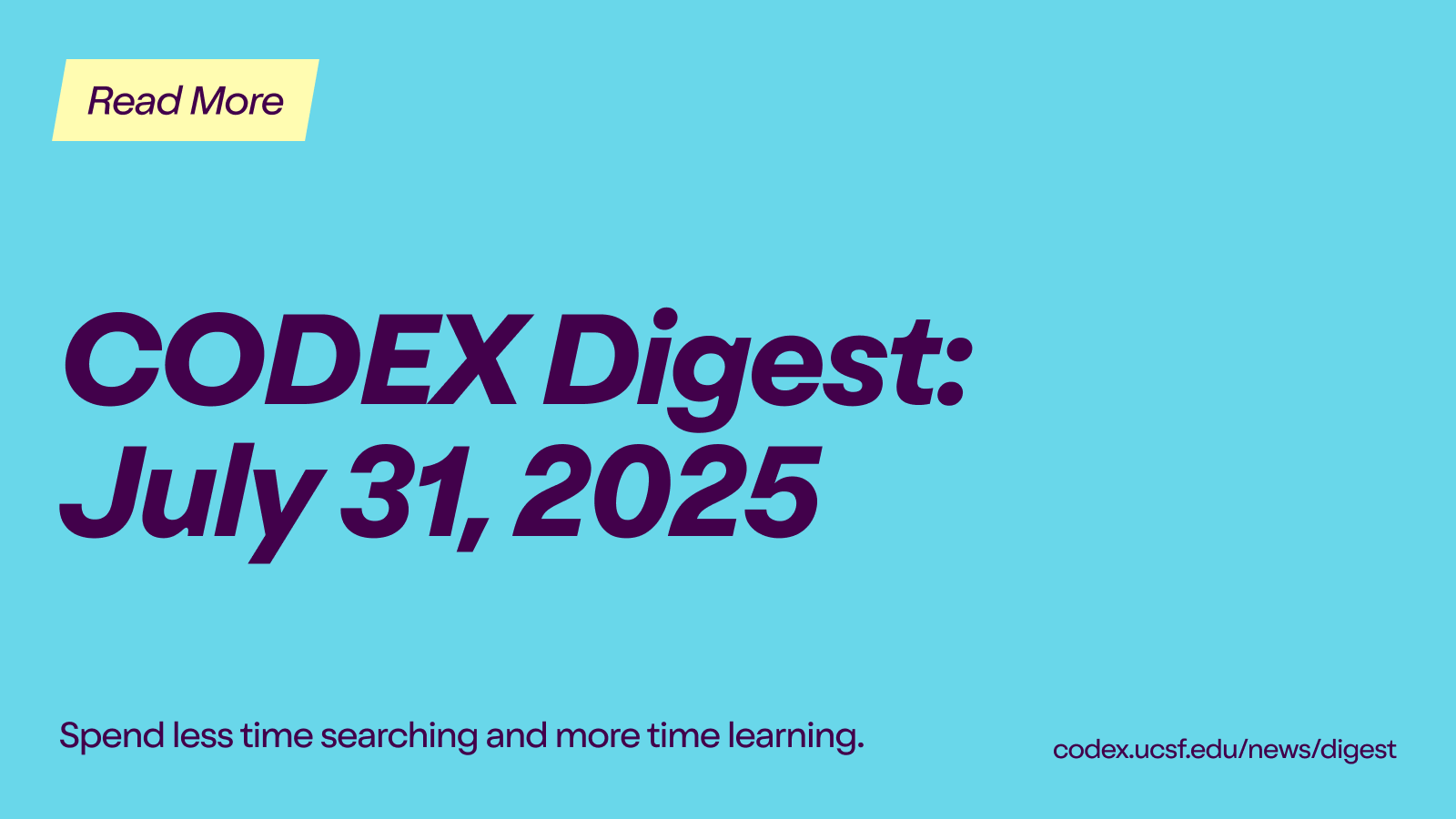CODEX Digest - 7.31.25
Want this delivered straight to your inbox every Thursday? Subscribe now.
This week’s picks dig into the use of AI for identifying physician fatigue, clinical decision-making in intensive care, and breast screening. Also featured this week are articles evaluating systems-level solutions for achieving diagnostic excellence, including institutional strategies for reducing unnecessary testing, identifying sepsis, and improving the reliability of radiology follow-ups.
Here are this week's must-reads:
Titles link to the PubMed record or free-to-access sites with full text availability.
From black box to clarity: strategies for effective AI informed consent in healthcare.
Chau M, Rahman MG, Debnath T. Artif Intell Med. 2025;167:103169.
Use of AI for diagnosis raises concerns for informed consent effectiveness. This review highlights strategies for improving informed consent documentation efforts to ensure patients are aware and comfortable with the role of AI in their care. Use of plain language, visual aids, and information targeted to the individual patient can improve patient trust and awareness of AI use in their care.
Evaluating misalignment between emergency department and discharge diagnoses.
Cui W, Huo X, Finkelstein J. Stud Health Technol Inform. 2025;328:273-277.
Diagnostic misalignment across care processes can contribute to patient confusion, clinician workload, and treatment delay. This study uses large datasets, including the All of US Research program, to examine emergency department and inpatient care for patients with chronic cardiopulmonary conditions to identify diagnostic discordance over time. Partial matches were more common in patients with multiple conditions, and incorrect diagnoses were linked to longer hospital stays.
Diagnostic overshadowing in systemic lupus erythematosus (SLE): a qualitative study.
Harwood R, Wincup C, D’Cruz D, et al. Lupus. 2025;34(8):819-831.
Clinician misattribution of new symptoms to an existing condition rather than a new one, or diagnostic overshadowing (DOS), can bias decision-making and affect treatment initiation over multiple clinical engagements. This study interviews systemic lupus erythematosus (SLE) patients to examine their experience with DOS. The results indicate “medical mysteries,” negative misattributions, and psychosomatic and mental health attributions often affect the differential diagnosis process.
A machine learning model using clinical notes to identify physician fatigue.
Hsu C-C, Obermeyer Z, Tan C. Nat Commun. 2025;16(1):5791.
Physician fatigue affects teamwork, personal wellbeing, and decision-making. This study examines patterns in physician documentation that flag clinician fatigue. It raises the concern that models trained on medical notes from fatigued physicians may generate notes reflecting lower-quality clinical information.
Levin C, Suliman M, Naimi E, Saban M. J Clin Nurs. 2025;34(7):2898-2907.
The discussion of how to best infuse GenAI and diagnostic expertise is ongoing. This study helps clarify how GenAI tools might support clinical decision-making in intensive care. While current AI models perform well on some standard cases, experienced ICU nurses are more accurate and show better judgment in a wider range of complex situations.
Beyond thinking fast and slow: a Bayesian intuitionist model of clinical reasoning in real-world practice. (subscription required)
Ng IKS, Goh WGW, Lim TK. Diagnosis (Berl). 2025;12(2):182-188.
An established method for understanding clinical reasoning processes is centered on the dual-process approach of thinking either instinctively or deliberately. This commentary submits that active care clinical reasoning will improve instead with a practical focus on intuitive thinking and decision progression as evidence and data are received. Recommendations are shared to teach and apply the model.
Popic D, Marinovich ML, Houssami N, et al. PLoS ONE. 2025;20(5):e0323528.
Integrating AI into healthcare is complex, and multidimensional knowledge is required to make sure AI systems support safe and fair decisions. This study looks at how women feel about using AI in breast screening. Most women interviewed did not like the idea of AI working on its own, but some were open to it being used as a tool to help doctors, depending on how it was used and if they were consulted on the use.
Diagnostic safety and quality optimization in sepsis study protocol.
Shrestha S, Kowalkowski M, Birken S, et al. J Hosp Med. 2025;20(7):800-807.
Sepsis is often misdiagnosed, and fixing this problem is important. This protocol provides background on a study to involve 20 hospitals working together to understand what helps or impedes correctly diagnosing sepsis. What is learned will be used to create a toolkit to improve sepsis diagnostic excellence in different hospital settings.
Strebe J, Wong E, Ma R, et al. Open Forum Infect Dis. 2025;12(5):ofaf228.
The reduction of unnecessary diagnostic testing improves cost, overuse, and patient satisfaction. This project employs the diagnostic stewardship strategy of a reflex urine culture policy in a resource-limited setting. The program reduced unneeded urinary cultures by an average of 20% and realized cost savings of $425,000 in nine months. Statistically insignificant rates of adverse effects were recorded.
Whalen S, Trivedi S, Herren J, et al. Curr Probl Diagn Radiol. 2025;54(4):418-421.
Incidental findings when clinically significant can affect patient care if appropriate closed-loop communication doesn’t occur. This article shares an institutional strategy to improve the reliability of follow-up for radiologic incidental findings. The initiative identified 270 patients from 2,243 incidental findings who benefited from improved follow-up with needed care escalation.
About the CODEX Digest
Stay current with the CODEX Digest, which cuts through the noise to bring you a list of recent must-read publications handpicked by the Learning Hub team. Each edition features timely, relevant, and impactful journal articles, books, reports, studies, reviews, and more selected from the broader CODEX Collection—so you can spend less time searching and more time learning.
Get the latest in diagnostic excellence, curated and delivered straight to your inbox every week:
See past digests here.

